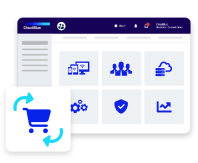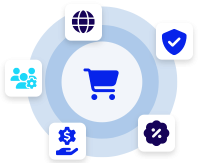Product Lifecycle Management (PLM) is a comprehensive approach to managing the entire lifecycle of a product, from its inception and design, through manufacturing, distribution, and support, all the way to its retirement or end of life. It involves coordinating and integrating data, processes, and people across different departments and functions within an organization to effectively manage and optimize product development, production, and maintenance.
In the context of SaaS (Software as a Service), PLM is particularly important because it enables organizations to manage the lifecycle of software products or applications. Here’s why PLM is crucial for SaaS:
- Centralized Product Data Management: PLM provides a centralized repository for managing product-related data, including requirements, design specifications, documentation, version control, and related artifacts. In SaaS, this includes managing the software codebase, configurations, and other assets. Having a centralized system ensures that all stakeholders have access to accurate and up-to-date product information, fostering collaboration and reducing the risk of data inconsistencies.
- Streamlined Development and Release Processes: PLM facilitates efficient product development and release processes. It enables teams to manage development tasks, track progress, and collaborate on feature implementation. With PLM, SaaS companies can streamline their software development lifecycle, ensuring that requirements are properly captured, development activities are managed effectively, and releases are planned and executed efficiently.
- Change Management and Version Control: SaaS applications often require frequent updates, bug fixes, and feature enhancements. PLM helps manage these changes by providing version control and change management capabilities. It enables teams to track changes, manage different versions of the software, and implement effective release strategies. This ensures that changes are properly tested, documented, and deployed, minimizing the risk of introducing errors or breaking existing functionality.
- Collaboration and Cross-Functional Integration: PLM promotes collaboration and integration across different teams involved in the SaaS product lifecycle, including product management, development, quality assurance, operations, and customer support. It facilitates communication, knowledge sharing, and visibility into each stage of the product lifecycle. This collaboration leads to better coordination, faster decision-making, and improved product quality.
- Compliance and Regulatory Requirements: SaaS companies often need to comply with various industry standards, regulations, and data protection requirements. PLM provides mechanisms to capture and manage compliance-related information, ensuring that necessary controls and processes are in place. It helps track and document compliance activities, audits, and certifications, reducing legal and regulatory risks.
Customer Feedback and Product Enhancement: PLM enables the collection and management of customer feedback and feature requests. By incorporating customer input into the PLM process, SaaS companies can prioritize and plan product enhancements, ensuring that the product evolves to meet customer needs and remains competitive in the market.













